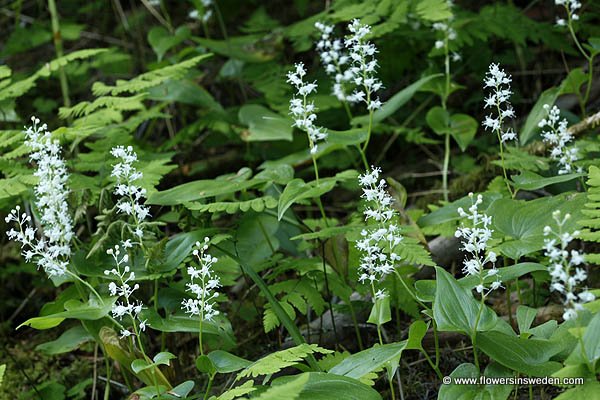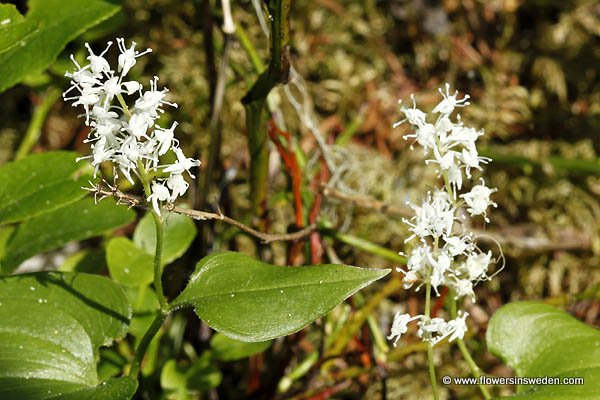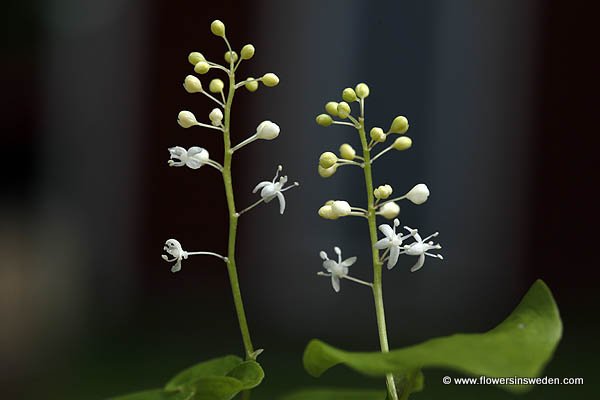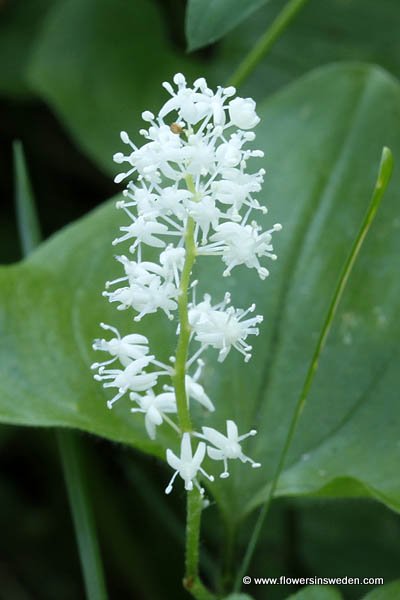
| Scientific name: | Maianthemum bifolium (L.) F. W. Schmidt | |
| Synonym name: | Maianthemum dilatatum (DC.) | |
| Swedish name: | Ekorrbärssläktet | |
| German name: | Schattenblumen | |
| Nederlandse naam: | Dalkruid | |
| English name: | False lily of the valley, May lily | |
| Plant Family: | Asparagaceae, Sparrisväxter |

|
| Life form: | Rhizomatous flowering plant | |
| Stems: | Erect, from 10-35 cm high rising from spreading underground rhizomes. Stem upper part short-haired. | |
| Leaves: | One basal leaf that withers away before flowering, two heart to triangular stem leaves, 3-8 cm long and 2-5 cm broad | |
| Flowers: | White star shaped 4 tepals, 4 stamens | |
| Flowering Period: | May, June | |
| Fruits: | Berries red at maturity, 3-6 mm in diam. | |
| Habitat: | Forests, especially margin of forests |

Derivation of the botanical name: Maianthemum, Maius, "May"; anthemon, "flower"; "Maia's Blooms," May flower. bifolium, twin-leaved. dilatatum, broadened, expanded, widened.


|